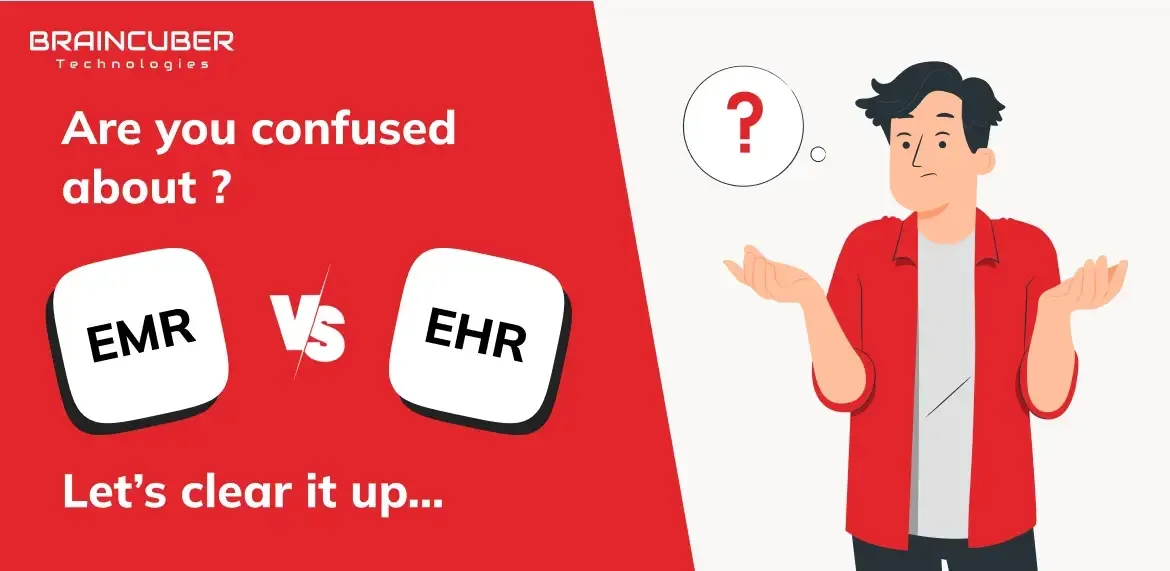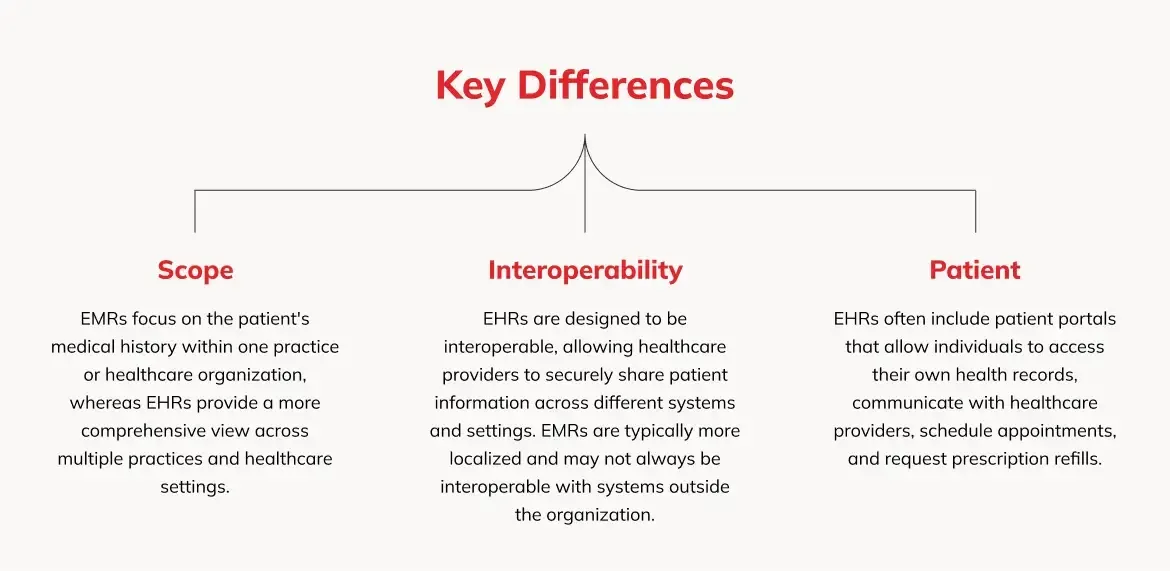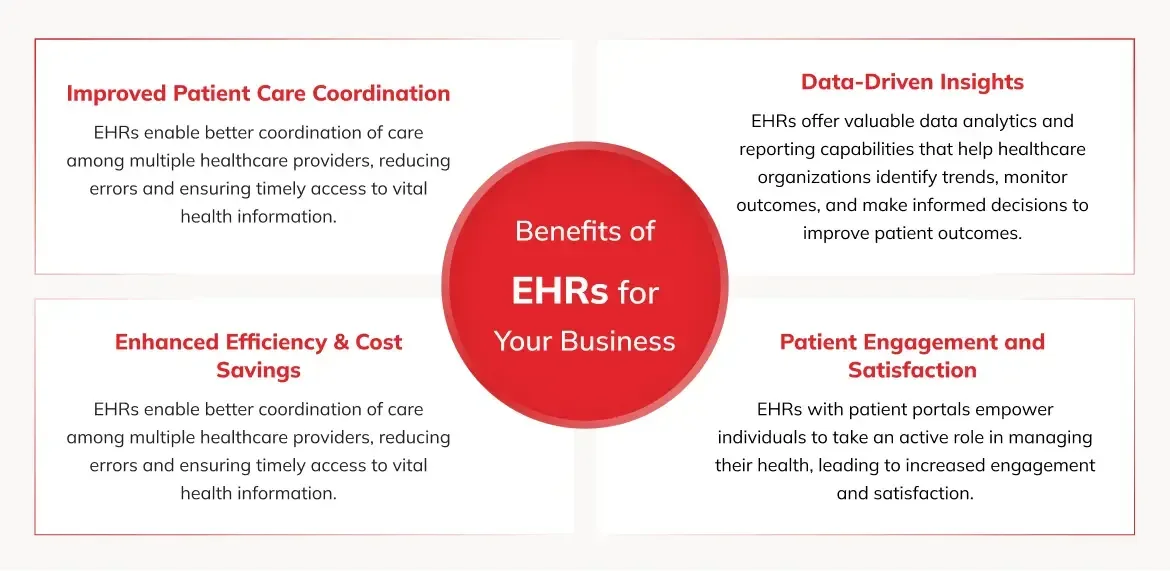Engagement Module
Next Gen AI Solution
Maintenance
Designing
Consultant
Industries
EMR vs EHR: Understanding the Differences and Benefits for Your Business

In the world of Healthcare technology, terms like EMR (Electronic Medical Records) and EHR (Electronic Health Records) are often used interchangeably, but they actually have distinct differences and unique benefits. If you’re a healthcare business navigating the digital landscape, understanding these differences is crucial for optimizing your operations and patient care.
What are EMR and EHR?
EMR (Electronic Medical Records)
EMRs are digital versions of paper charts used by healthcare providers in clinical settings. They contain patient medical and treatment histories, created and maintained by providers within a single healthcare organization. EMRs typically include patient demographics, diagnoses, medications, treatment plans, immunization dates, allergies, radiology images, and laboratory results.
EHR (Electronic Health Records)
EHRs are a broader digital record of a patient’s health information, combining data from multiple healthcare organizations. They go beyond the data collected in the provider’s office and include a more comprehensive view of a patient’s health history. EHRs are designed to be shared securely among providers and include information from all clinicians involved in a patient’s care.
Key Differences of EMR vs EHR

Scope
EMRs focus on the patient’s medical history within one practice or healthcare organization, whereas EHRs provide a more comprehensive view across multiple practices and healthcare settings.
Interoperability
EHRs are designed to be interoperable, allowing healthcare providers to securely share patient information across different systems and settings. EMRs are typically more localized and may not always be interoperable with systems outside the organization.
Patient Access
EHRs often include patient portals that allow individuals to access their own health records, communicate with healthcare providers, schedule appointments, and request prescription refills.
Benefits Of EHRs For Your Business

Improved Patient Care Coordination
EHRs enable better coordination of care among multiple healthcare providers, reducing errors and ensuring timely access to vital health information.
Enhanced Efficiency and Cost Savings
By digitizing health records and streamlining workflows, EHRs can reduce administrative costs and eliminate paperwork.
Data-Driven Insights
EHRs offer valuable data analytics and reporting capabilities that help healthcare organizations identify trends, monitor outcomes, and make informed decisions to improve patient outcomes.
Patient Engagement and Satisfaction
EHRs with patient portals empower individuals to take an active role in managing their health, leading to increased engagement and satisfaction.
For more information feel free to reach out to us.




